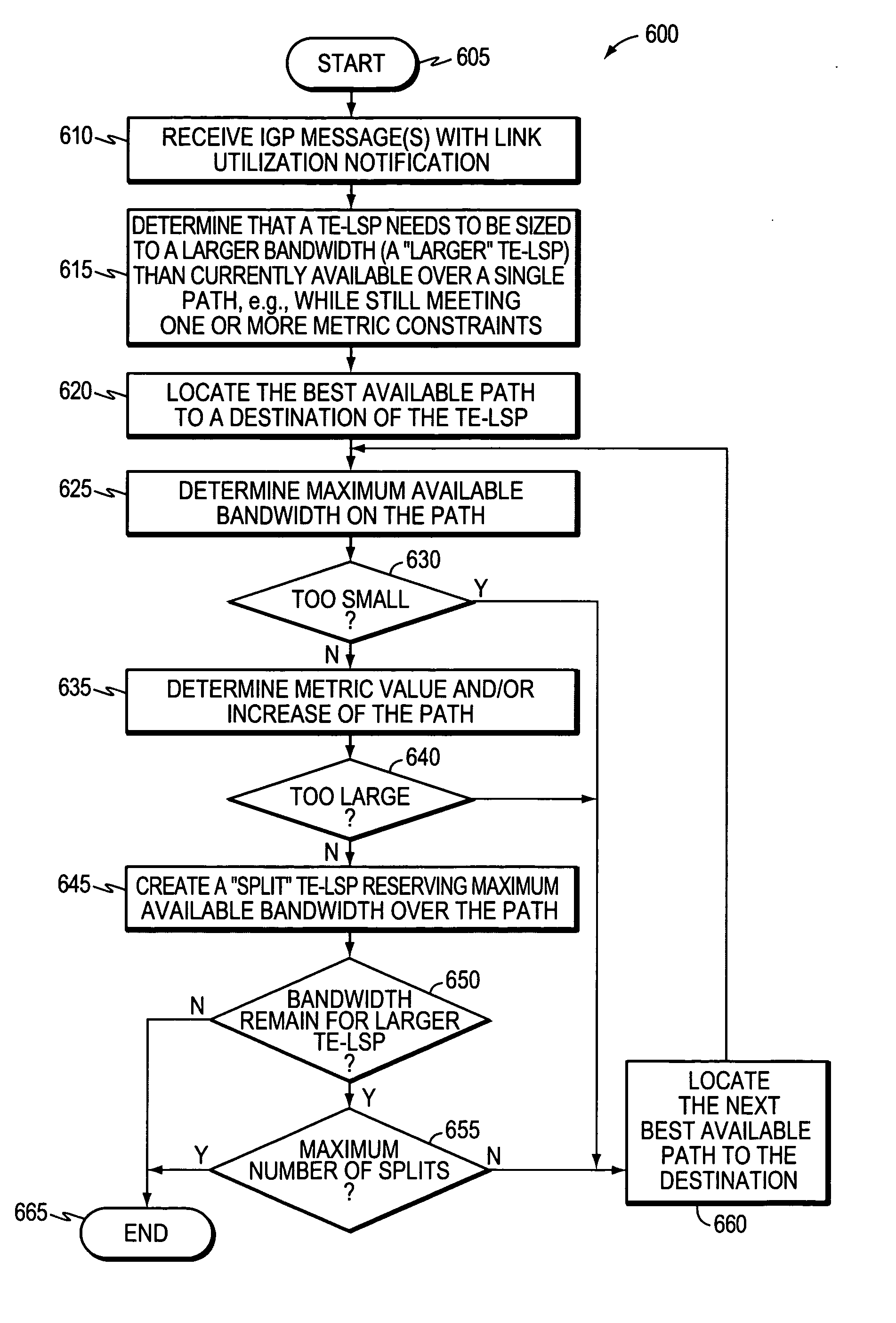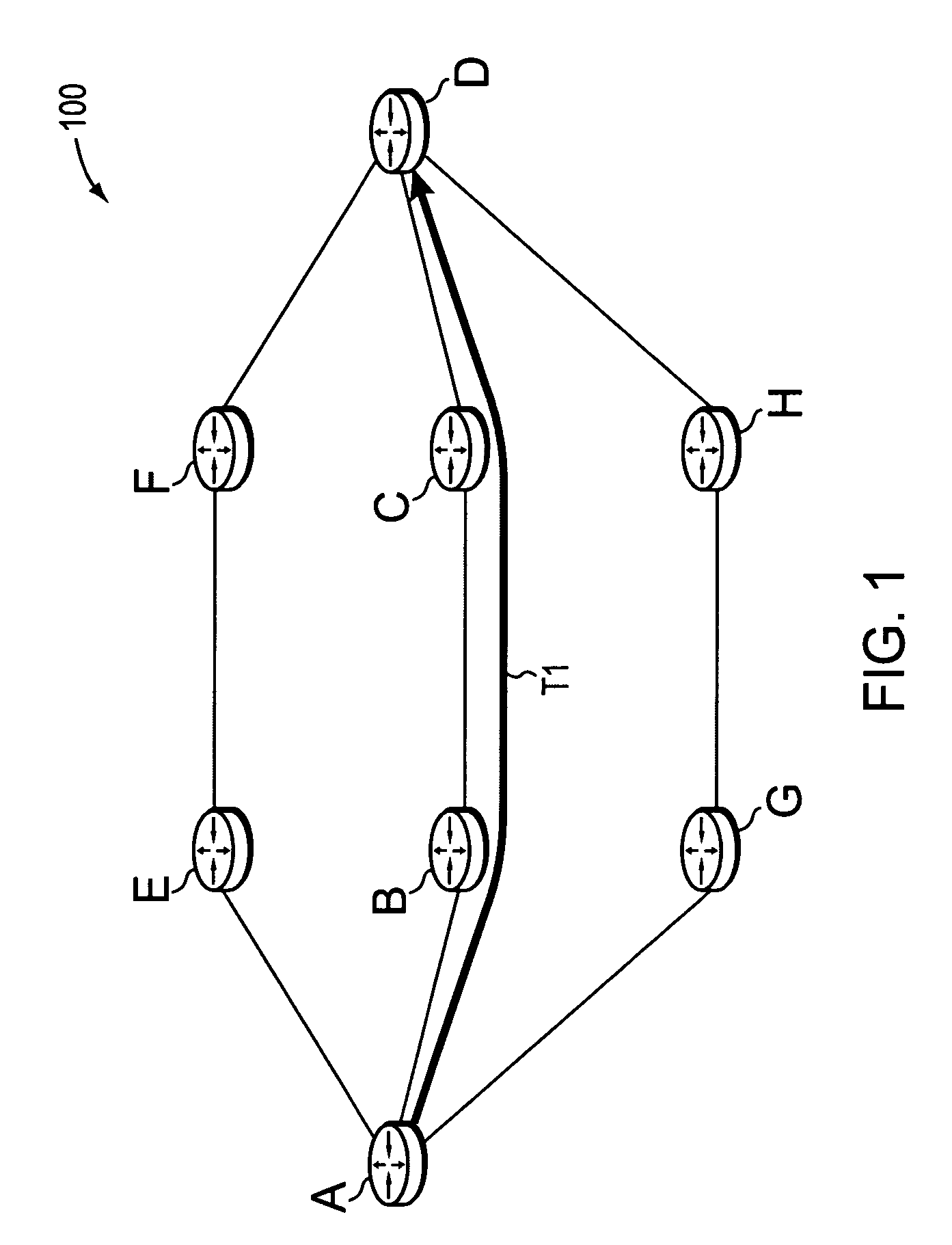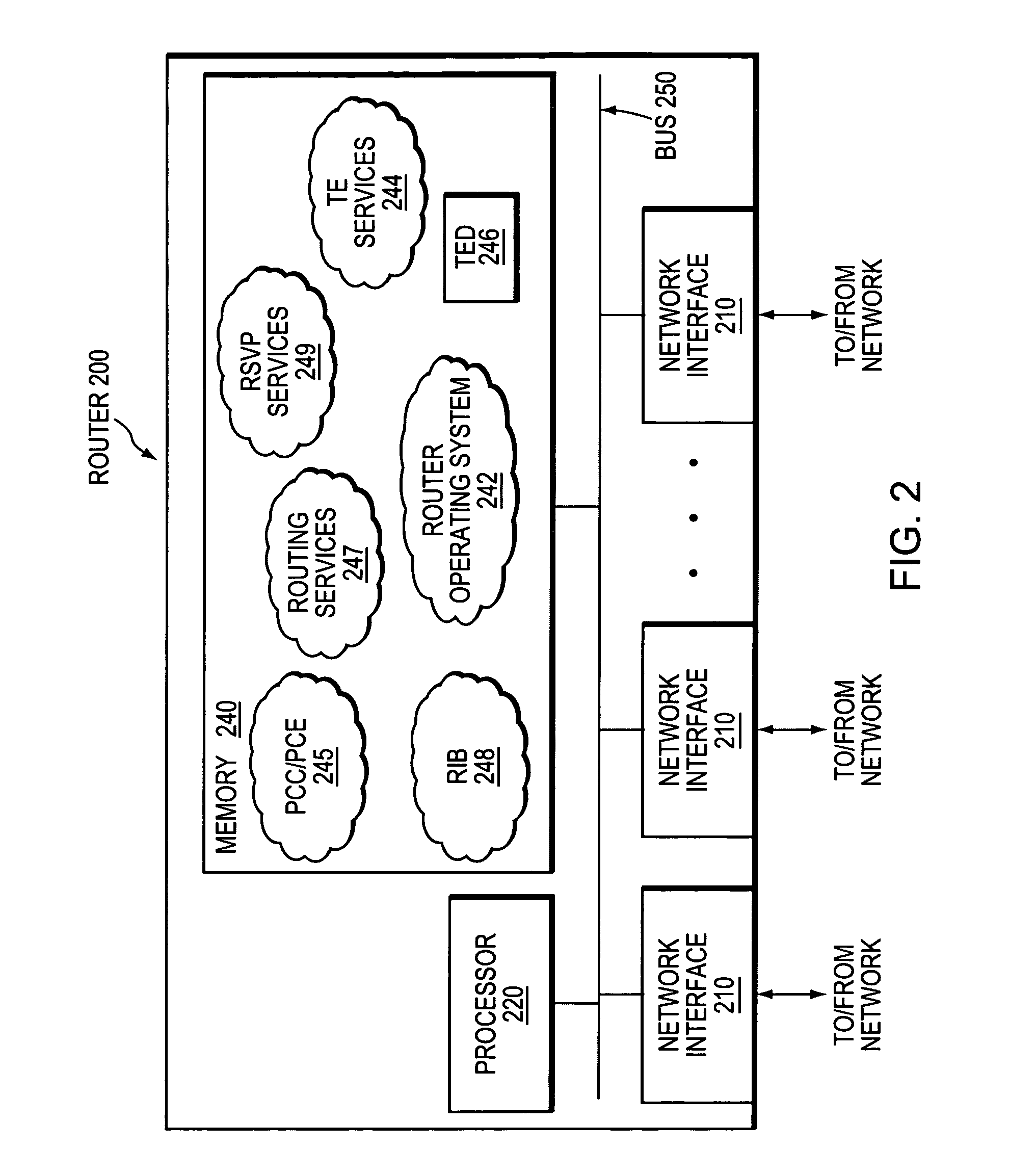Technique for dynamically splitting MPLS TE-LSPs
a dynamic splitting and label switching technology, applied in the field of computer networks, can solve the problems that the te-lsp may need to be split into smaller lsps, and achieve the effects of optimal load balance, short paths, and increased bandwidth reserv
- Summary
- Abstract
- Description
- Claims
- Application Information
AI Technical Summary
Benefits of technology
Problems solved by technology
Method used
Image
Examples
Embodiment Construction
[0033]FIG. 1 is a schematic block diagram of an exemplary computer network 100 comprising routers A-H (e.g., intra-domain routers) interconnected through links as shown. The links between the routers may have an associated metric value (e.g., cost), and available bandwidth value, as described below. Network 100 may be contained within a single autonomous system (AS) or area, or may span multiple areas under certain circumstances as will be understood by those skilled in the art. An AS is herein defined to be a group of intermediate nodes, such as inter-domain and / or intradomain routers, within a network that are subject to a common authority and execute one or more inter-domain and / or intradomain routing protocols. Although the network 100 is illustratively shown within a single AS, those skilled in the art will appreciate that the network may alternatively be configured as routing domains or other networks or subnetworks. Notably, any number of nodes or routers may be used in the n...
PUM
 Login to View More
Login to View More Abstract
Description
Claims
Application Information
 Login to View More
Login to View More - R&D
- Intellectual Property
- Life Sciences
- Materials
- Tech Scout
- Unparalleled Data Quality
- Higher Quality Content
- 60% Fewer Hallucinations
Browse by: Latest US Patents, China's latest patents, Technical Efficacy Thesaurus, Application Domain, Technology Topic, Popular Technical Reports.
© 2025 PatSnap. All rights reserved.Legal|Privacy policy|Modern Slavery Act Transparency Statement|Sitemap|About US| Contact US: help@patsnap.com



